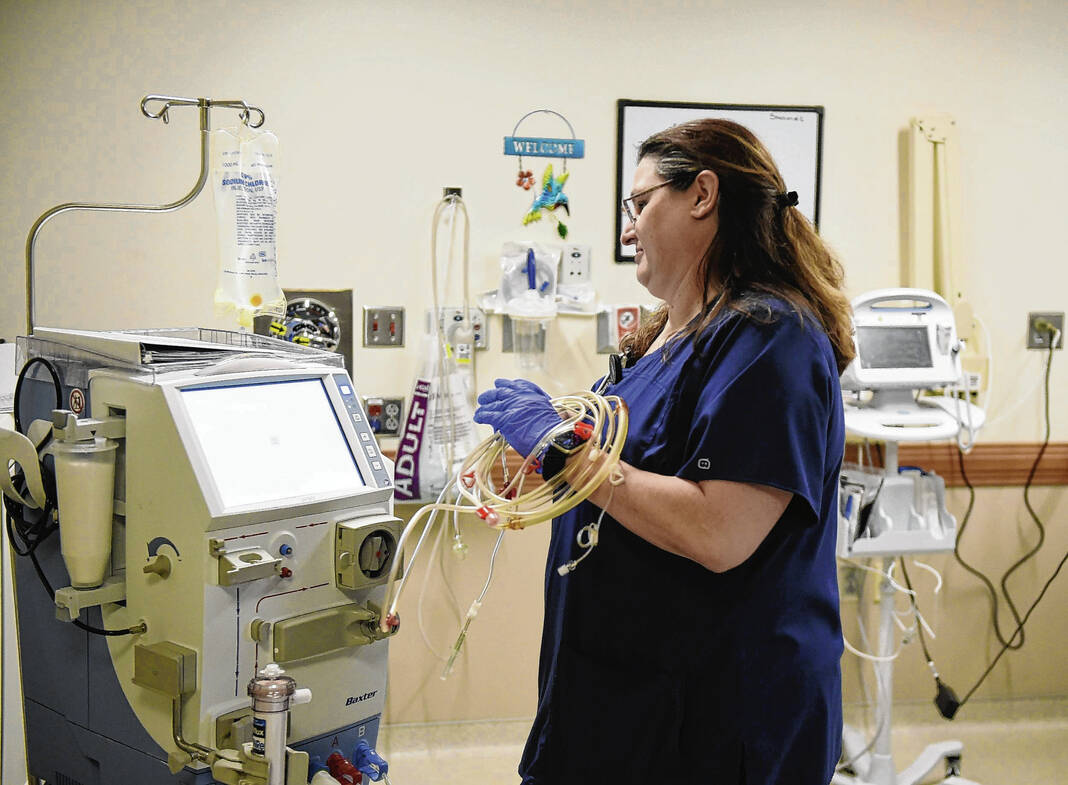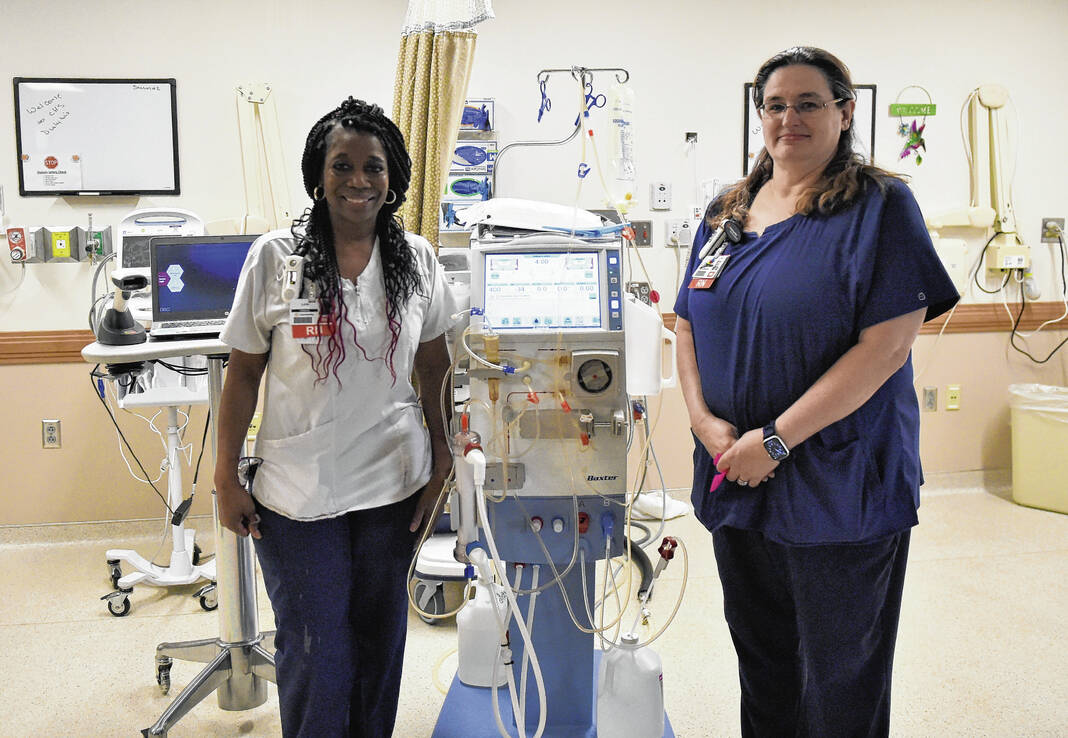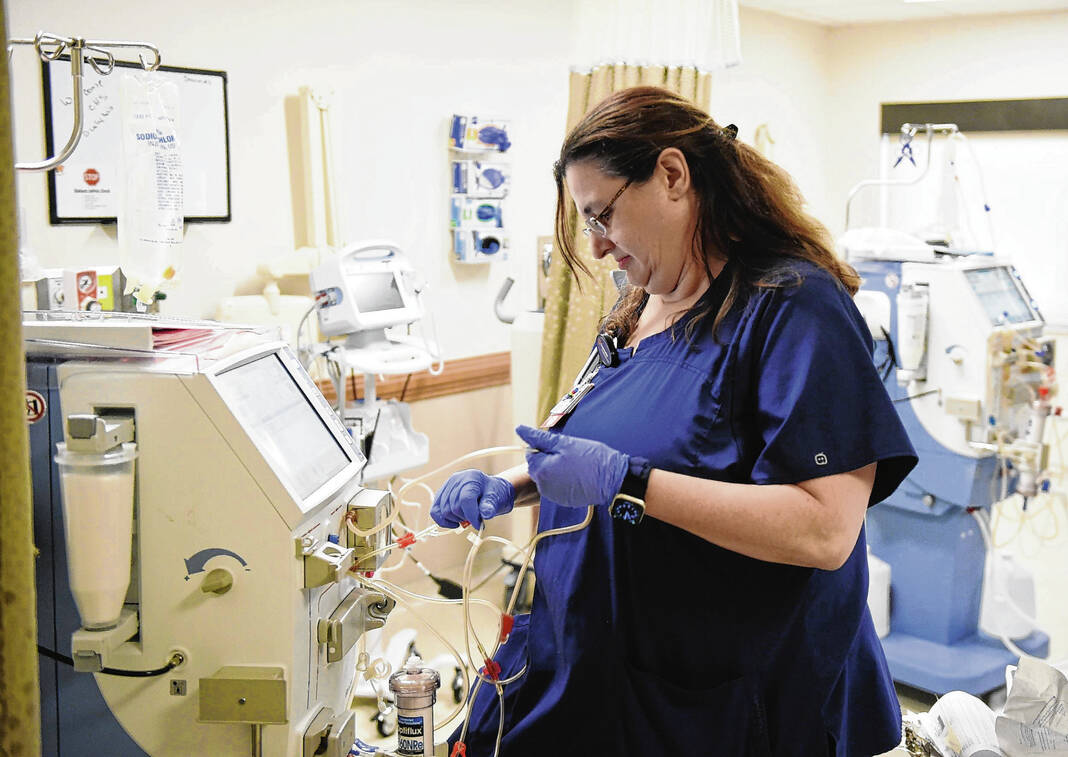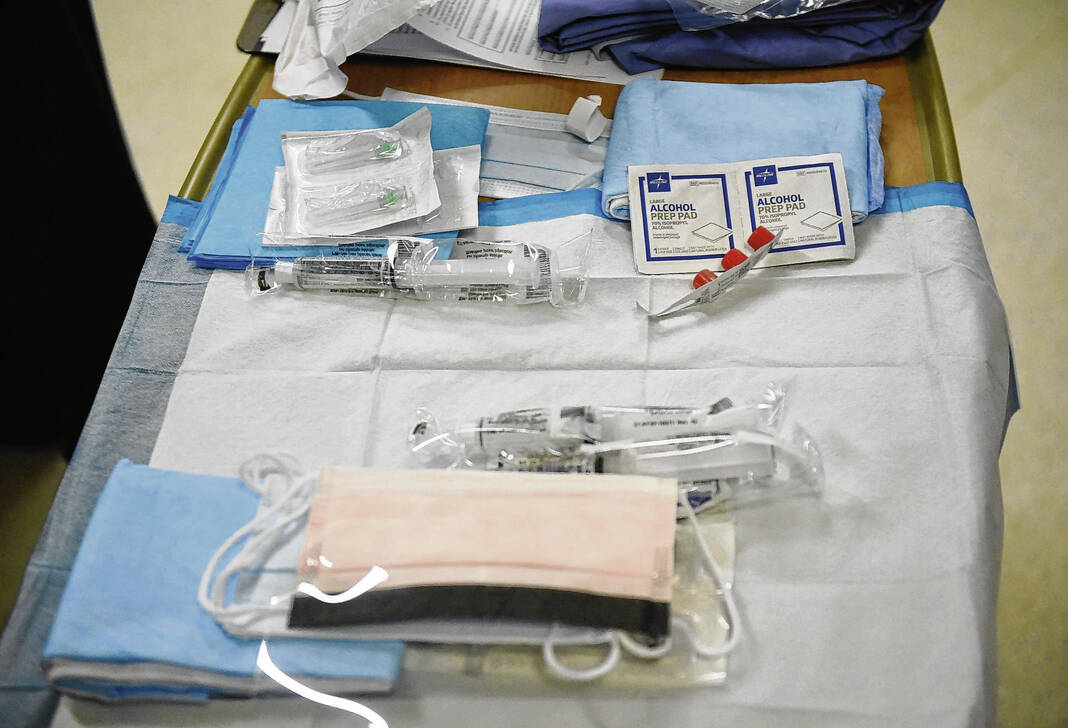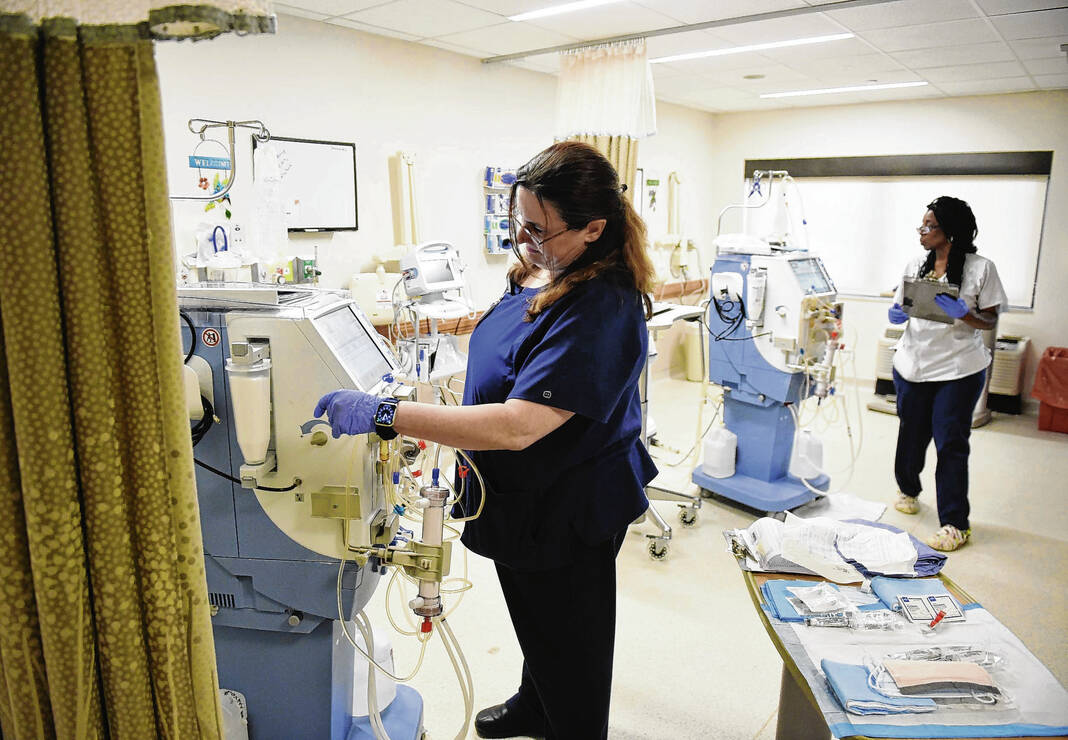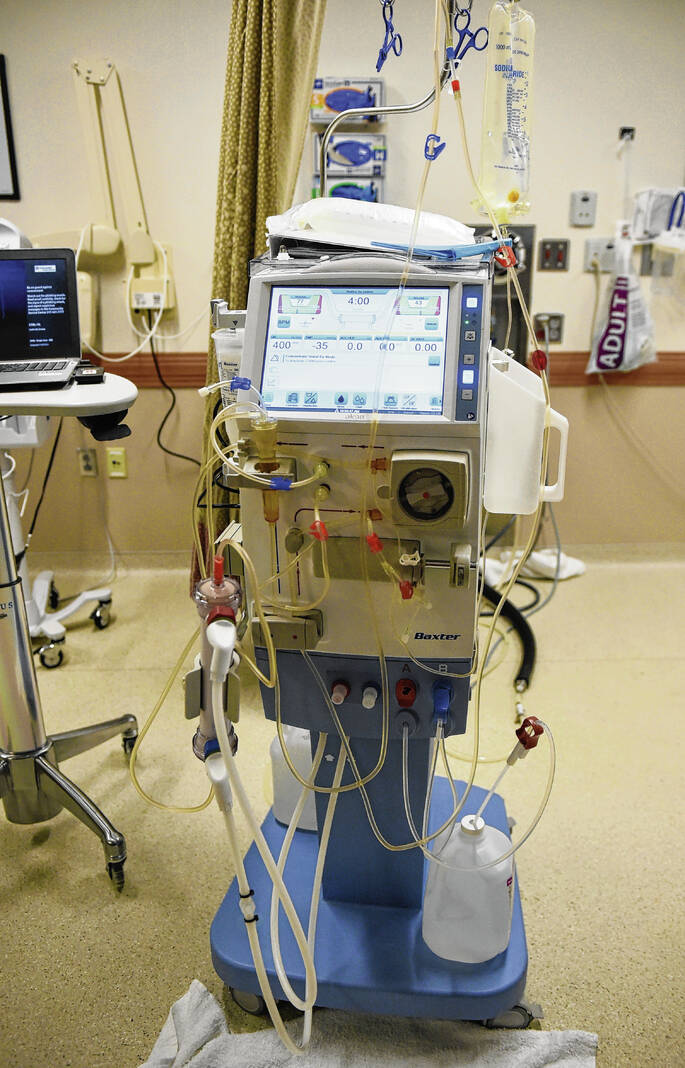Community Hospital South leaders faced an unexpected, and urgent, dilemma.
Like many other health care facilities, the hospital works with another company to provide dialysis care to its patients. So when the company working with Community Hospital South was unable to renew its contract, the hospital faced an end to its dialysis offerings.
Officials didn’t want to do that to their patients with severe kidney injuries. So they built their own dialysis facility.
“It was a little overwhelming,” said Jamie Sowers, director of nursing at Community Hospital South. “Once our team decided that we were going to do this, we were all in. We had full support from our leadership, that if anyone was going to do it, it was going to be us.”
Community Hospital South now has a full-service dialysis department up and running, created from scratch and born out of necessity. Patients can receive a wide range of dialysis care, from traditional services given for a few hours three times a week to continuous dialysis given to people in the intensive care unit.
For the nurses and staff who helped make the dialysis department a reality, it’s a source of pride and evidence of Community Health’s commitment to its patients.
“Every single caregiver involved in this was invested in caring for our patients,” Sowers said. “As a southsider, we have a very strong community that want to see stay here. They don’t want to have to go to the northside. So it was really important for us to do everything we could to provide services for our patients and not just say we would figure it out later.”
Inside the hospital’s newly remodeled 3 East wing, a large space serves as the home of the dialysis department. The focus is on creating a comfortable atmosphere for patients as they come in for services.
A handwritten message on a whiteboard welcomes people into the area. A colorful hummingbird also proclaims “Welcome” to visitors. Yellow, pink and red paper flowers decorate a bulletin board as soon as you walk in. Staff makes sure the patients coming in for treatment are prepared for spending a few hours in the unit.
“We make sure they’ve been to the bathroom, they’ve had their morning care, they’ve had their breakfast. We get them good and fed, we get them warm and comfortable and on treatment,” said Tina Davis, supervisor of clinical kidney care.
Nothing speaks to the sense of welcoming the unit’s staff have created than their four dialysis machines, named to ensure that everyone who comes in knows “you’ve got a friend.”
The nurses in the unit gave the machines the monikers Blanche, Rose, Sofia and Dorothy — after the main characters on “The Golden Girls.” The names were a joke as the staff was training on the machines.
“If there’s an issue with one of them or a question on it, instead of referring them by a six-digit ID number, it’s really easy to say, ‘Sofia is really causing trouble’ or ‘Dorothy ran great today,’” Sowers said. “It’s just a fun way to keep track.”
The relaxed spirit inside Community Hospital South’s dialysis unit is a marked departure from the work and anxiety that went into creating it.
Plans starting coming together in 2022. In July, hospital leadership learned that Fresenius Kidney Care, the company Community worked with to provide a dialysis program, was unable to renew the contract with the hospital. The contract would end on Oct. 11.
In repeated discussions with Community Hospital South leaders, as well as Community Health Network officials from across the health care system, they determined the best option would be to bring dialysis in-house.
“We had a short amount of time where we had to figure out two paths. We had to figure out how to take care of these patients right now, and we also had to look at long-term procuring of the equipment,” said Tony Reynolds, director of nursing in the intensive care unit. “We were meeting daily to figure it all out.”
Dialysis is required for patients whose kidneys are not working properly. Specialized machinery removes waste products and excess liquid from the blood, serving as a replacement for the job the kidneys normally do. Different types of dialysis focus on different ailments for patients.
The first dialysis service offered by Community was in the intensive care unit, where patients received percutaneous intermittent renal replacement therapy starting in October 2022. The treatment called for people in intensive care to receive dialysis for 6 to 12 hours.
Intensive care staff were able to provide it as an alternative to continuous renal replacement therapy, a slower and ongoing treatment that patients receive over a long period of time. At the same time, staff worked to get the continuous therapy program available for patients.
“It’s something we were working on doing on the ICU, so we’d already decided to take that on ourselves. We thought we could do a good job with it,” Reynolds said. “We’ve seen great outcomes with the patients.”
Community also developed a program for peritoneal dialysis, which is done through a patient’s abdomen. Staff was trained in a matter of months, equipment was purchased and it was ready to be offered in December. Since that time, they’ve administered 127 runs of peritoneal dialysis, Sowers said.
“We were the only hospital within Community Health Network in the Indianapolis region to offer it until last week,” she said. “Our model of peritoneal dialysis specifically is the model that the other Community hospitals have used to get theirs up and running. We’re really spearheaded that program among our other hospitals.”
The final piece of the puzzle was offering traditional hemodialysis. Patients come into the unit for a few hours multiple times a week to have toxins removed from their blood.
Community purchased the four hemodialysis machines and hired a staff of four dialysis nurses to provide the treatment. Davis was brought in as the supervisor of the unit.
The five-person dialysis staff has 119 years of nursing experience between them, including 74 solely working with dialysis patients, Davis said.
On June 12, the hospital opened up its full-service traditional dialysis unit. The results have had a positive impact, not only on patients but also on the morale of the hospital staff as well.
“It feels good to take care of all of the dialysis patients at this point,” Sowers said. “Being able to be full service really had made us feel that we can truly take care of all of our patients. The last thing we wanted to do was send them somewhere else when they really wanted to be here or needed to be there.
“We didn’t want our patients to have to go somewhere else because we couldn’t do something for them.”



